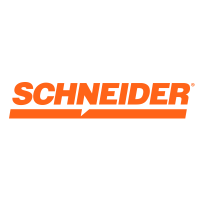
Aptargroup Inc
NYSE:ATR


| US |

|
Johnson & Johnson
NYSE:JNJ
|
Pharmaceuticals
|
| US |

|
Berkshire Hathaway Inc
NYSE:BRK.A
|
Financial Services
|
| US |

|
Bank of America Corp
NYSE:BAC
|
Banking
|
| US |

|
Mastercard Inc
NYSE:MA
|
Technology
|
| US |

|
UnitedHealth Group Inc
NYSE:UNH
|
Health Care
|
| US |

|
Exxon Mobil Corp
NYSE:XOM
|
Energy
|
| US |

|
Pfizer Inc
NYSE:PFE
|
Pharmaceuticals
|
| US |

|
Palantir Technologies Inc
NYSE:PLTR
|
Technology
|
| US |

|
Nike Inc
NYSE:NKE
|
Textiles, Apparel & Luxury Goods
|
| US |

|
Visa Inc
NYSE:V
|
Technology
|
| CN |

|
Alibaba Group Holding Ltd
NYSE:BABA
|
Retail
|
| US |

|
JPMorgan Chase & Co
NYSE:JPM
|
Banking
|
| US |

|
Coca-Cola Co
NYSE:KO
|
Beverages
|
| US |

|
Walmart Inc
NYSE:WMT
|
Retail
|
| US |

|
Verizon Communications Inc
NYSE:VZ
|
Telecommunication
|
| US |

|
Chevron Corp
NYSE:CVX
|
Energy
|
Utilize notes to systematically review your investment decisions. By reflecting on past outcomes, you can discern effective strategies and identify those that underperformed. This continuous feedback loop enables you to adapt and refine your approach, optimizing for future success.
Each note serves as a learning point, offering insights into your decision-making processes. Over time, you'll accumulate a personalized database of knowledge, enhancing your ability to make informed decisions quickly and effectively.
With a comprehensive record of your investment history at your fingertips, you can compare current opportunities against past experiences. This not only bolsters your confidence but also ensures that each decision is grounded in a well-documented rationale.
Do you really want to delete this note?
This action cannot be undone.

| 52 Week Range |
113.12
172.31
|
| Price Target |
|
We'll email you a reminder when the closing price reaches USD.
Choose the stock you wish to monitor with a price alert.

|
Johnson & Johnson
NYSE:JNJ
|
US |

|
Berkshire Hathaway Inc
NYSE:BRK.A
|
US |

|
Bank of America Corp
NYSE:BAC
|
US |

|
Mastercard Inc
NYSE:MA
|
US |

|
UnitedHealth Group Inc
NYSE:UNH
|
US |

|
Exxon Mobil Corp
NYSE:XOM
|
US |

|
Pfizer Inc
NYSE:PFE
|
US |

|
Palantir Technologies Inc
NYSE:PLTR
|
US |

|
Nike Inc
NYSE:NKE
|
US |

|
Visa Inc
NYSE:V
|
US |

|
Alibaba Group Holding Ltd
NYSE:BABA
|
CN |

|
JPMorgan Chase & Co
NYSE:JPM
|
US |

|
Coca-Cola Co
NYSE:KO
|
US |

|
Walmart Inc
NYSE:WMT
|
US |

|
Verizon Communications Inc
NYSE:VZ
|
US |

|
Chevron Corp
NYSE:CVX
|
US |
This alert will be permanently deleted.
Aptargroup Inc
AptarGroup Inc., a name that might not immediately resonate with the average consumer, plays a pivotal role in the transformation of everyday experiences across the globe. Operating at the forefront of packaging solutions, AptarGroup ingeniously bridges the worlds of beauty, pharmaceuticals, food, and beverage through its innovative dispensing systems. The company specializes in designing and manufacturing a wide array of delivery solutions, including pumps, closures, aerosol valves, and spray devices. These products, often hidden within the framework of beloved consumer brands, enhance usability, preserve product integrity, and elevate user satisfaction. AptarGroup’s commitment to innovation is fueled by substantial investments in research and development, positioning the company as a strategic partner to its clients, who rely on Aptar’s expertise to create intuitive and reliable packaging.
In the business landscape, AptarGroup thrives by embedding itself deeply into the supply chains of some of the world's most iconic brands. By understanding the nuanced needs of different industries, the company tailors its solutions to meet diverse market demands, leading to long-standing collaborations and contracts. AptarGroup's business model focuses on both broadening its market reach and deepening its expertise in key areas, allowing for diversification and reduced dependency on any single market sector. This strategic versatility not only enhances their competitive edge but also fortifies their revenue streams. Whether it's the precision required in pharmaceutical packaging or the aesthetic demands of cosmetic products, AptarGroup’s prowess lies in its ability to harmonize functionality with form, ensuring consumer satisfaction while driving sustainable growth in the packaging industry.

AptarGroup Inc., a name that might not immediately resonate with the average consumer, plays a pivotal role in the transformation of everyday experiences across the globe. Operating at the forefront of packaging solutions, AptarGroup ingeniously bridges the worlds of beauty, pharmaceuticals, food, and beverage through its innovative dispensing systems. The company specializes in designing and manufacturing a wide array of delivery solutions, including pumps, closures, aerosol valves, and spray devices. These products, often hidden within the framework of beloved consumer brands, enhance usability, preserve product integrity, and elevate user satisfaction. AptarGroup’s commitment to innovation is fueled by substantial investments in research and development, positioning the company as a strategic partner to its clients, who rely on Aptar’s expertise to create intuitive and reliable packaging.
In the business landscape, AptarGroup thrives by embedding itself deeply into the supply chains of some of the world's most iconic brands. By understanding the nuanced needs of different industries, the company tailors its solutions to meet diverse market demands, leading to long-standing collaborations and contracts. AptarGroup's business model focuses on both broadening its market reach and deepening its expertise in key areas, allowing for diversification and reduced dependency on any single market sector. This strategic versatility not only enhances their competitive edge but also fortifies their revenue streams. Whether it's the precision required in pharmaceutical packaging or the aesthetic demands of cosmetic products, AptarGroup’s prowess lies in its ability to harmonize functionality with form, ensuring consumer satisfaction while driving sustainable growth in the packaging industry.
EPS Beat: Adjusted EPS for the quarter was $1.62, up 4% year-over-year and above consensus.
Pharma Growth: Pharma core sales rose 2%, with strong growth in injectables (18%) and active material science (3%), but emergency medicine and consumer healthcare faced near-term headwinds.
Emergency Medicine Outlook: Emergency medicine (including Narcan) will be a headwind into 2026, with revenues expected to decline approximately 35% next year due to customer inventory normalization.
Segment Margins: Pharma margin improved 120 bps to 37.2%; Beauty margin fell 120 bps to 12.1%; Closures margin declined 110 bps to 16.1%.
Shareholder Returns: Share repurchases reached $190 million (1.3 million shares), the highest in a decade; dividend increased nearly 7% to $0.48 per share.
Q4 Guidance: Q4 adjusted EPS expected between $1.20 and $1.28; positive core sales growth anticipated in Beauty and continued closure volume growth.
M&A Activity: Announced acquisition of Soma Plus in Brazil to expand oral dosing pharma packaging footprint.






































